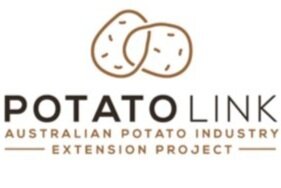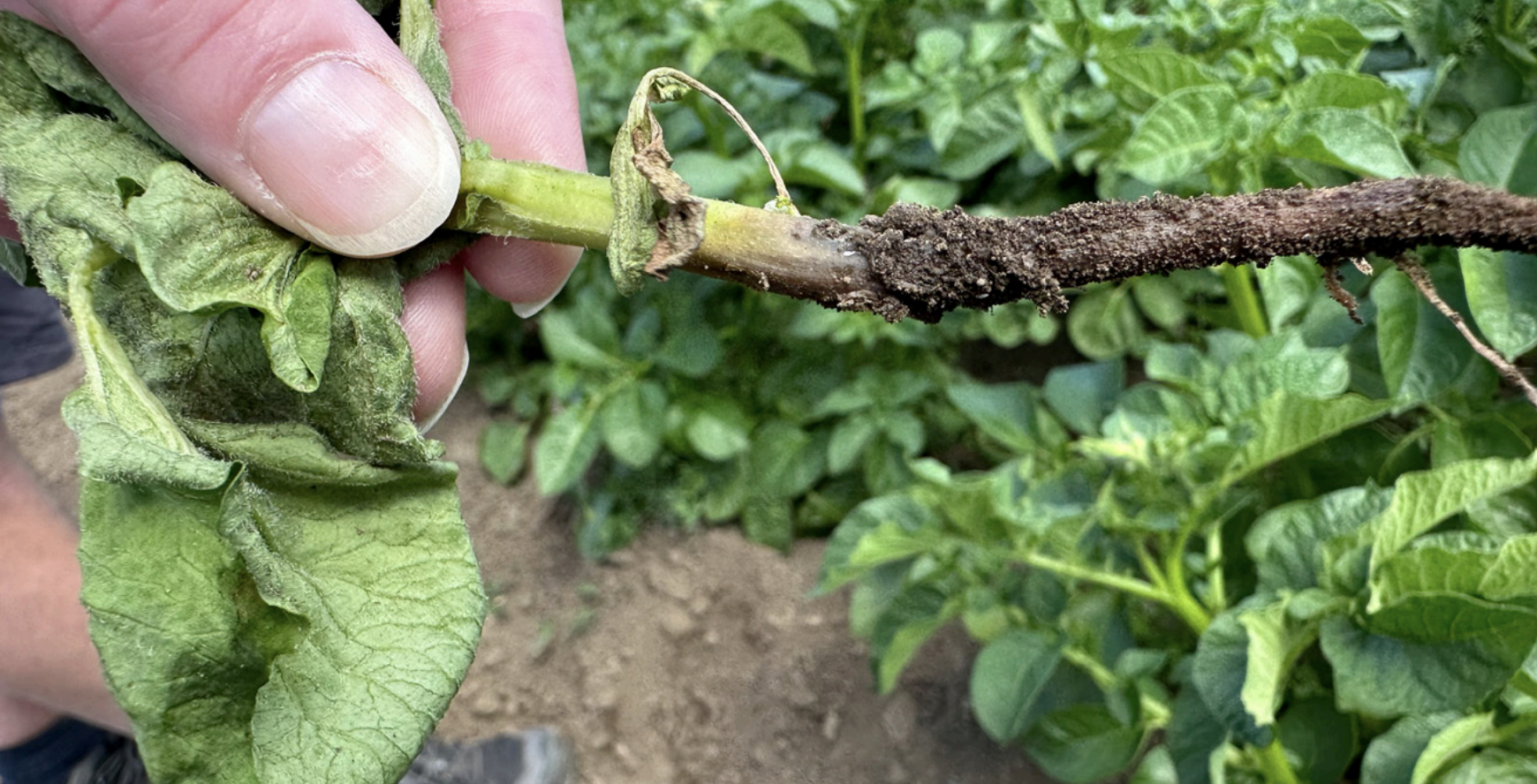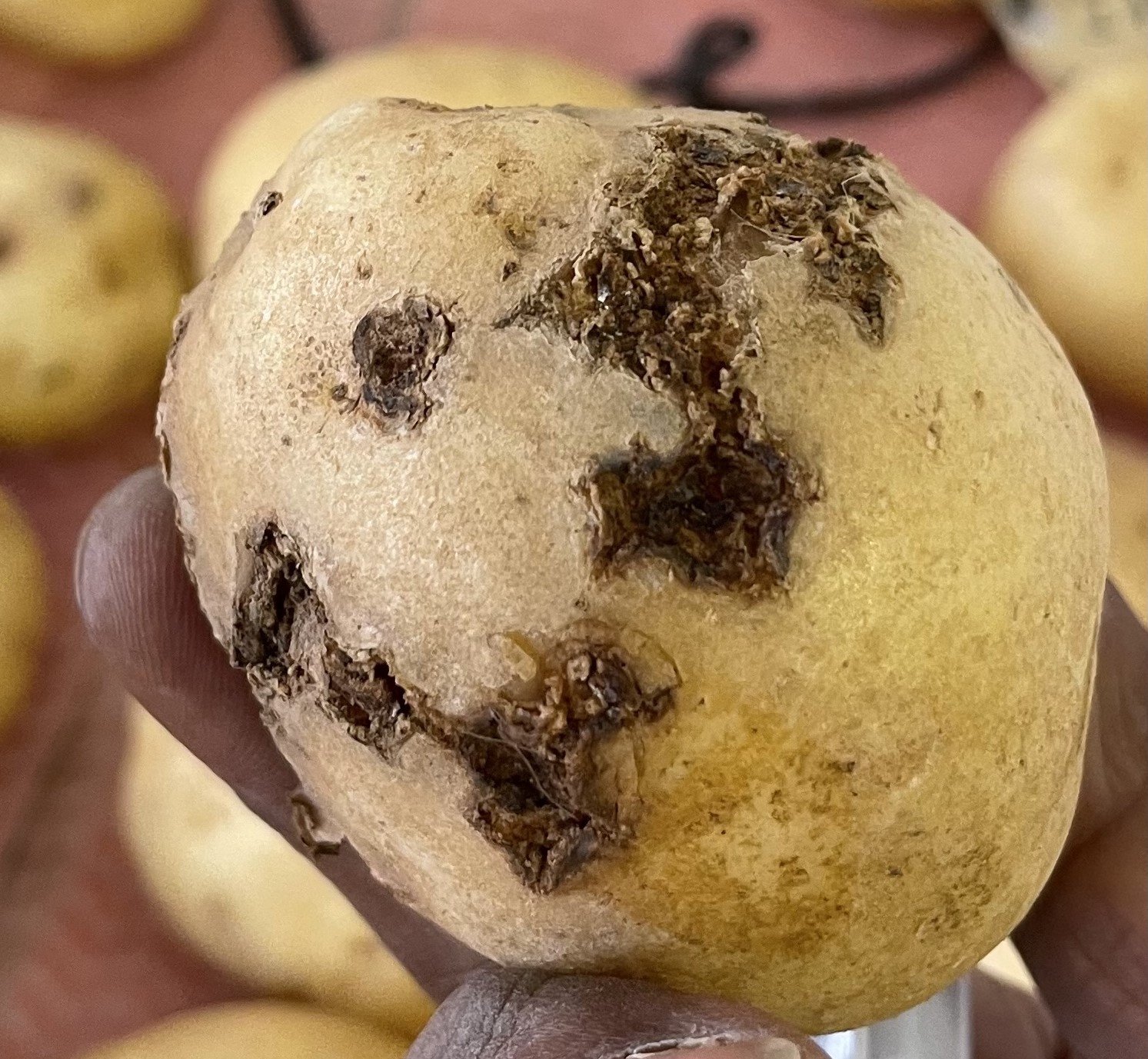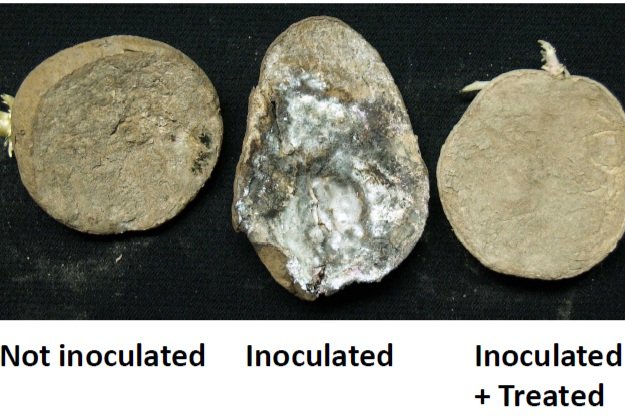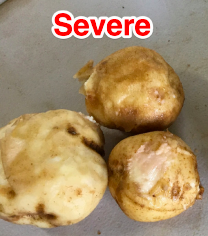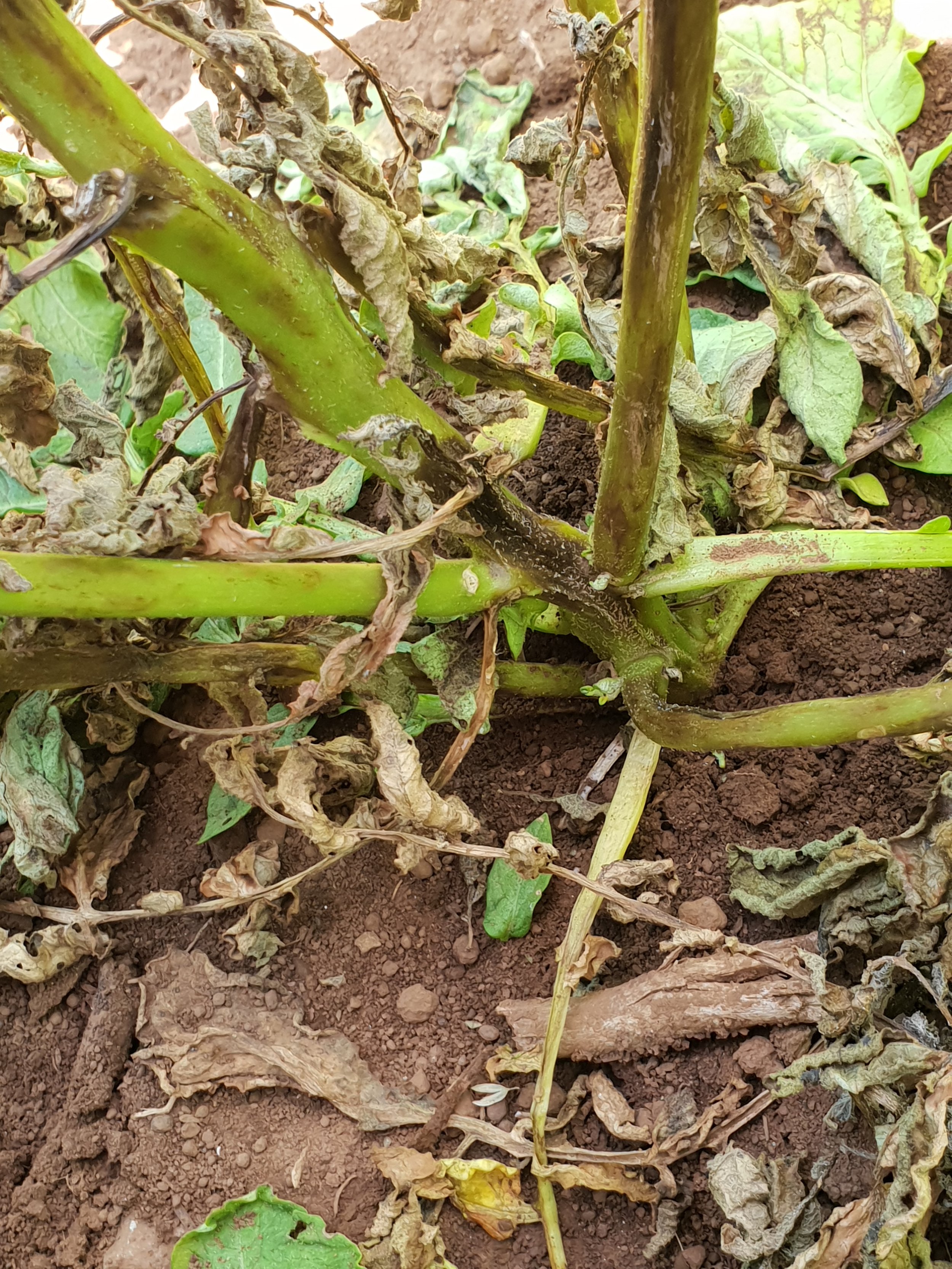Monitoring key soil-borne diseases of fresh potato in WA
A WA study used DNA-based tools to track powdery scab, black dot, and common scab. The findings highlight both the value and limits of soil testing in managing the impact of disease on tuber quality and yield. Read more in Issue 16 of PotatoLink magazine.
Identifying disease through diagnostics
Knowing what disease you are dealing with is the first step to managing it. This fact sheet discusses what the important things are to look for, when the best time for testing is, and where to send it.
Helping potatoes help themselves: inducing plant defences
Just like us, plants have evolved sophisticated mechanisms to defend themselves against pests and pathogens. One of the most intriguing strategies is 'Induced Systemic Resistance' (ISR). Specific microbes or environmental triggers can activate the plant defences, improving its ability to ward off attack or cope with stress. And we can help that happen. Read the full article in Issue 13 of PotatoLink magazine.
Storage diseases
When the potatoes have been harvested, graded and put into storage a great weight has been lifted. The spuds aren’t going to be stuck in the ground due to late season rain. Grubs and bugs aren’t going to start affecting the tubers, and it looks like most of the disease issues have been avoided. They’re safe. Except there is another consideration, and that is storage diseases, discussed in this PotatoLink magazine article.
Blackleg in potatoes
Blackleg is a bacterial infection of potato tubers and stems. While the disease is not widespread in Australia, new causal organisms have been identified over the past few years, warranting industry awareness.
Tomato potato pysllid (TPP) and zebra chip
This webinar on tomato potato psyllid (TPP) and zebra chip was delivered by Dr Melinda Moir, senior laboratory scientist in entomology at the Department of Primary Industries and Regional Development (DPIRD), and John Jackson, director of Potatoes New Zealand.
Pink Rot, Pythium, Dry Rot, and Soft Rot
Dr Phillip Wharton from Idaho University delivered this webinar on rot diseases in potatoes including Pink Rot, Leak (Pythium), Dry Rot and Soft Rot. It looked at the biology of the pathogens, symptoms and management options.
Soil Biology Master Class 2021 (Part 4 of 4): Panel session with potato growers sharing their experiences, including Q&A
Watch this panel discussion and the last soil biology masterclass with potato growers across Australia and see many of your questions answered.
Soil Biology Master Class 2021 (Part 2 of 4): Soil biology and control of soil-borne pathogens
In this second soil biology masterclass, Dr. Calum Wilson explains about the good, the bad and ugly ones in the soil and how they interact, and what you can do to keep them in balance to protect your potato crop.
Menaces in potato soil - the common scab story
In this PotatoLink Disease Webinar Series No 1, research scientist, Dr Tonya Wiechel, provided an overview of a 10-year integrated disease management program showcasing the team’s investigations into common scab.
Evaluation of postharvest treatments for the control of bacterial soft rot in potatoes
Management of rots, both in the field and postharvest, is an ongoing challenge for potato producers. The issue is usually managed by minimising the time interval between harvesting and processing of potatoes. Read the report by Soil Wealth Integrated Crop Protection for more information.
Managing Blackleg in potato
Blackleg on potato can be caused by either Pectobacterium or Dickeya species, and they often work together in different combinations to cause this disease. Blackleg can result in stem decay, severe seed decay and sometimes lack of plant emergence in severe cases. This Hort Innovation and RM Consulting Group (RMCG) factsheet provides information on managing blackleg in potato crops.
Soil Wealth Integrated Crop Protection Podcast: Potato soft rot
Management of rots, both in the field and post-harvest, is an ongoing challenge for potato producers. Agronomists Marc Hinderager and Dr Pieter Van Nieuwenhuyse discuss a trial that was set up to explore the effect of sanitisers and/or drying on the development of post-harvest bacterial soft rot in potatoes.
Monitoring psyllids and psyllid predators in Australian potato crops
This Monitoring Psyllids and Psyllid Predators in Australian Potato Crops report by Tasmanian Institute of Agriculture (TIA) and Hort Innovation covers the different psyllid populations found and the levels of psyllid predators present.
Review bacterial Blackleg disease and R&D gaps with a focus on the potato industry
This 2018 report looks at the available literature and information regarding species present in Australia. It also investigates the accessibility of accurate diagnostic tests.
Enhanced detection of potato cyst nematode and bacterial wilt to improve market access for the Australia and New Zealand Potato Industries
This 2004 report goes into the detection of potato cyst nematodes (Globodera rostochiensis) through DNA analysis. It also delves into different diagnostic tools that can be used to determine the presence of bacterial wilt (brown rot caused by Ralstonia solanacearum).
